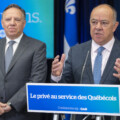To evaluate a budget, I’ve always asked a simple question: which problem(s) is it trying to solve?
A budget that needs 700 pages of (red) ink says a lot about government motivations.
I can only try to answer what to me is the most important question from a public policy angle at this particular moment: where will economic growth come from over the long term?
To start, it was clear for some time that the government’s decision to spend more than $100 billion in so-called short-term stimulus was a political solution in search of an economic problem. If you search for an output gap, even in the short term, you’ll find the budget arithmetic doesn’t match the current economic data.
The budget document is clear on that front: “Private sector economists expect real gross domestic product (GDP) to rebound from a contraction of 5.4 per cent in 2020 to growth of 5.8 per cent in 2021 and 4 per cent in 2022, a faster recovery than the growth rates of, respectively, 4.8 per cent and 3.2 per cent projected in the November 2020 Fall Economic Statement (FES 2020).”
And then a key sentence: “Real GDP growth is expected to moderate to about 2 percent on average per year over the remaining years of the forecast horizon, reflecting a return to trend long-run growth rates.”
One can try in the 739 pages to find a clear plan to make Canada more productive and competitive. Although some of the objectives and proposed measures — investments in child care, skills, life bio sciences and clean tech — should be applauded, it is hard to find a coherent growth plan.
Was there any debate on measures to prioritize? Any trade-offs? Governing is about making choices, but if this budget can be defined as anything it is everything. No one has been left out.
It seems we are often last to find out the world is moving faster than we are.
In which sectors do we think we can be competitive on the global stage? It is impossible to find in the 270 measures this budget proposes.
Our labour force is aging and our low levels of business investment are reflective of a lack of large firms operating in our economy. We need to encourage more innovation to grow more firms. The government’s response in this budget? Essentially, doubling down on programs that do not address our innovation shortcomings and have yielded few results to date.
The Strategic Innovation Fund, which got a boost of $7.2 billion over the next seven years, is not the best of what industrial policy has to offer: instead of building sectoral capabilities in investing in applied R&D, which is what global leaders like the Germans, Americans and South Koreans do, it provides subsidies and repayable loans to firms. Does it drive more business investments and make our firms more competitive on the global stage? Nobody has ever tried to answer this question seriously in Ottawa.
What about the need to double down on applied research? Or commercialization of our publicly-funded research? IRAP, a well-intended but unambitious program at the National Research Council, is the best we could do apparently. Other countries, including the U.K. in its budget, are acting more boldly by creating mission-driven, DARPA-like institutions that are unconstrained by the pitfalls of Weberian bureaucracy.
While the Biden administration recently went big on leveraging public procurement to incentivize business innovation and create demand for new products and services, it’s still business as usual in Canada.
British Columbians will be happy to find out they will now have their own regional development agency, at a price tag of $550 million. Will it do regional development? As Professor Donald Savoie recently asked: “What does the policy not include?”
What does this budget say about our level of ambition, and our resolve for steadfast execution and implementation? How fast will we move to assert ourselves economically in this new geopolitical environment?
On the same day Finance Minister Chrystia Freeland tabled the budget, NASA flew a helicopter on Mars and charted an unprecedented new partnership with the private sector on space exploration. Back in Ottawa, our budget allocated $90 million for incubators and accelerators “to give enrolled start-ups access to advice.”
It seems we are often last to find out the world is moving faster than we are. Just look at our record fighting the COVID-19 pandemic.
While China and the United States are moving fast to build their EV supply chains, bureaucrats at Natural Resources and at Treasury Board Secretariat will be busy in the coming year working on a new Treasury Board submission to fund a new “Critical Battery Minerals Centre of Excellence.”
With this huge stack of new programs, initiatives and measures, I can already see the long queue of ministers and their senior officials in line at Treasury Board meetings with their budget submissions. A year from now, maybe some of them will have received the money they were promised. This budget adds many layers of duplication and bureaucratic complexity to a system that was not known for its nimbleness and agility. A more focused public-private partnership in key areas to drive growth would achieve better results.
I go back to where I started: did we have to use a false economic premise for short-term stimulus to justify a ton of new unfocused and unimaginative structural spending? The private sector forecast contained in the budget tells us we will be back at 2 percent real GDP growth in 2023.
After doubling our federal debt in only six years, and spending close to a trillion dollars, not moving the needle on long-term growth would be the worst possible legacy of this budget.
Recommended for You

The AI boom must not worsen Alberta’s urban-rural divide

Québec understands the health-care status quo is failing. When will the rest of Canada?

Premier Legault’s health-care gamble is alienating Québec doctors—but will it pay off with voters?

Canada is at a breaking point—the growing generational gap is a big reason why




Comments (0)